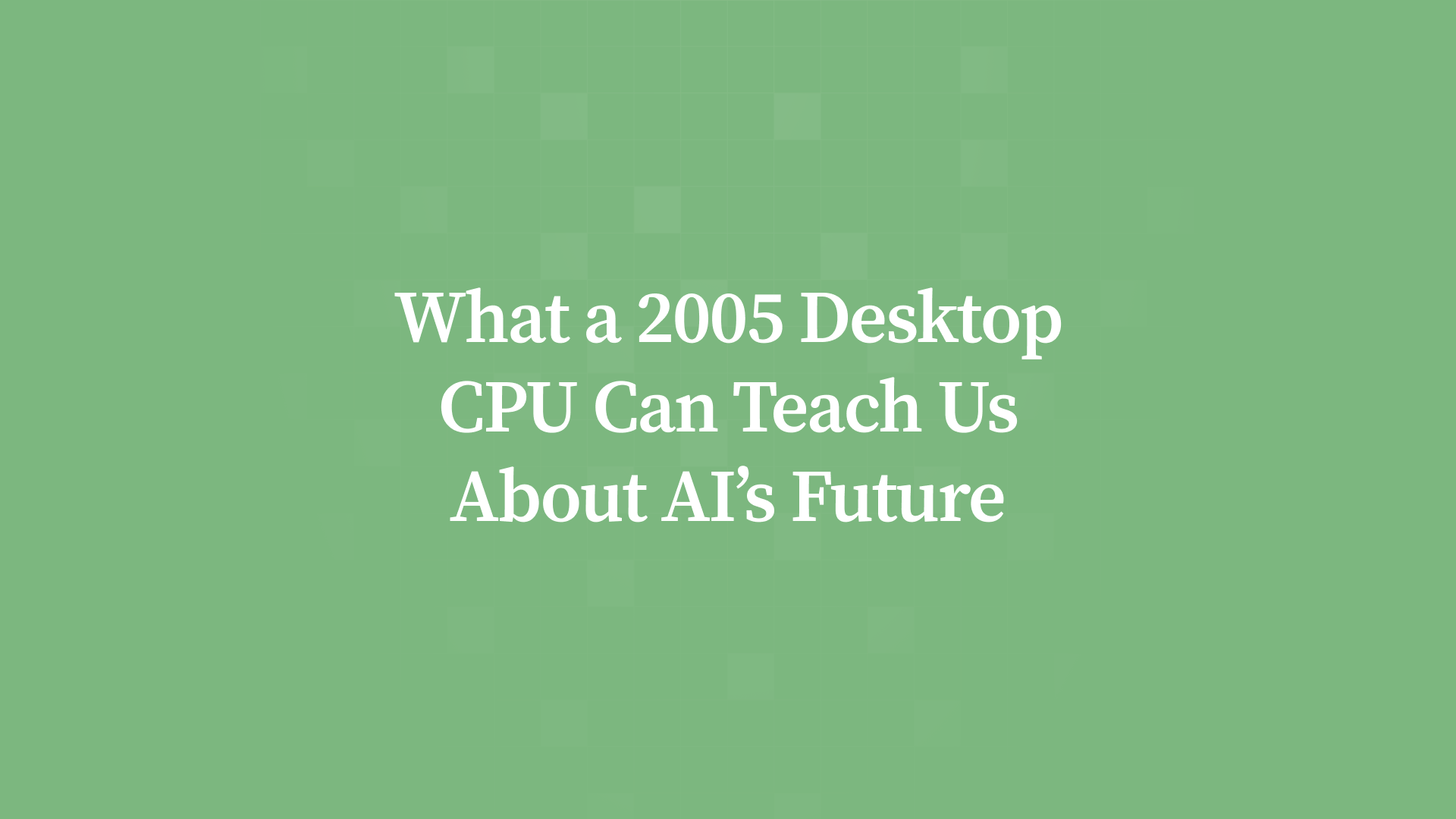What a 2005 Desktop CPU Can Teach Us About AI’s Future
What can CPU history teach us about AI? Just as multi-core processors revived computing after Dennard scaling, AI will evolve beyond today’s limits. Zenlytic delivers the reliability businesses need now, with Zoë, the AI data analyst who never lies


The recent, bumpy launch of GPT-5 has fueled speculation that we’ve reached the end of AI scaling. But history shows these “end-of-an-era” predictions rarely hold true.
If you lived through Moore’s Law, you know growth doesn’t follow a smooth, predictable curve. Instead, it’s a cycle of roadblocks followed by breakthroughs.
Lessons From the CPU Era
In 2008, Dennard scaling hit a wall. Voltages couldn’t be lowered further, CPU clock speeds plateaued, and many declared computing innovation “over.”
But instead of stopping, progress shifted. Multi-core processors and parallel computing unlocked two more decades of performance gains.
Key takeaway: Innovation doesn’t end; it evolves.
The AI Road Ahead
Today, large language models (LLMs) face a similar crossroads. The easy wins from pre-training alone have been mostly tapped.
But just as CPUs found new dimensions of progress, AI is already exploring fresh frontiers, such as:
- Latent-space reasoning
- Hierarchical learning
- Multi-agent systems
- Advanced reinforcement learning
No one knows which will dominate, but it’s almost certain that one—or several—will spark the next AI revolution.
Climbing the Next S-Curve
History makes one thing clear: temporary stalls don’t mark the end. They signal the start of the next S-curve.
AI isn’t finished scaling; it’s shifting. And when the next breakthrough arrives, growth will surge once again.
What This Means for AI in Data
At Zenlytic, we see an important lesson: scaling curves may stall, but businesses can’t wait for reliability.
Companies don’t want to gamble on the next big model—they need trustworthy AI today. That’s why we built Zoë, the AI data analyst who never lies.
While the industry explores new scaling strategies, Zenlytic ensures teams already have what matters most: consistent, accurate, and reliable analytics.
Because in the end, the real breakthrough isn’t just more intelligence—it’s reliable intelligence you can act on.
Follow Ryan Janssen for more insights on Linkedin.


